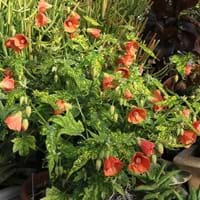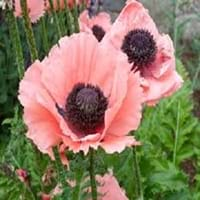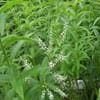Life Span
Perennial
Perennial
Type
Shrub
Tender Perennial
Origin
World/Pandemic
Western Asia
Types
Abutilion pictum "Mardi Gras"
Abutilon pictum "Thompsonii"
Not Available
Number of Varieties
Not Available
Habitat
gardens, Marshy ground, meadows, Suburban areas
Lake margins, Lake Sides, Temperate Regions
USDA Hardiness Zone
8-10
3-9
Sunset Zone
H1, H2, 8, 9, 12, 13, 14, 15, 16, 17, 18, 19, 20, 21, 22, 23, 24
A1, A2, A3, 1a, 1b, 2a, 2b, 3a, 3b, 4, 5, 6, 7, 8, 9, 10, 11, 14, 15, 16, 17, 18, 19, 20, 21
Habit
Clump-Forming
Upright/Erect
Flower Color
White, Yellow, Red, Orange, Pink, Peach, Dark Red, Copper, Bronze
Light Pink
Flower Color Modifier
Not Available
Bicolor
Fruit Color
Brown
Not Available
Leaf Color in Spring
Green, Gray Green, Dark Green
Green, Gray Green, Dark Green
Leaf Color in Summer
Green, Gray Green, Dark Green
Not Available
Leaf Color in Fall
Green, Gray Green, Dark Green
Green, Gray Green, Dark Green
Leaf Color in Winter
Green, Gray Green, Dark Green
Not Available
Leaf Shape
Maple shaped
Aristate
Plant Season
Spring, Summer, Fall, Winter
Spring, Summer
Sunlight
Full Sun, Partial Sun
Full Sun, Partial Sun
Type of Soil
Loam, Sand
Loam
The pH of Soil
Acidic, Neutral, Alkaline
Acidic, Neutral, Alkaline
Soil Drainage
Average
Well drained
Bloom Time
Indeterminate
Late Spring, Early Summer
Tolerances
Not Available
Not Available
Where to Plant?
Ground, Pot
Container, Ground, Pot
How to Plant?
Seedlings, Stem Planting
root cutting
Plant Maintenance
Medium
Medium
Watering Requirements
Average Water Needs
Keep the Soil well drained
In Summer
Lots of watering
Lots of watering
In Spring
Moderate
Moderate
In Winter
Average Water
Average Water
Soil pH
Acidic, Neutral, Alkaline
Acidic, Neutral, Alkaline
Soil Type
Loam, Sand
Loam
Soil Drainage Capacity
Average
Well drained
Sun Exposure
Full Sun, Partial Sun
Full Sun, Partial Sun
Pruning
Shape and thin as needed
Cut away fading foliage, Prune after flowering, Remove damaged leaves, Remove dead branches, Remove dead leaves
Fertilizers
All-Purpose Liquid Fertilizer
10-52-17 after germination, All-Purpose Liquid Fertilizer
Pests and Diseases
Insects
Pests and diseases free, Red blotch
Plant Tolerance
Drought
Deer resistant, Drought
Flower Petal Number
Single
Single
Foliage Texture
Medium
Medium
Foliage Sheen
Matte
Matte
Attracts
Birds, Hummingbirds
Not Available
Allergy
no allergic reactions
Skin irritation
Aesthetic Uses
Showy Purposes
along a porch, deck or patio, Beautification, Borders, Cottage Garden, Mixed Border, small hedge
Beauty Benefits
Not Available
Not Available
Edible Uses
Yes
Not Available
Environmental Uses
Air purification
Air purification, Deer resistant
Medicinal Uses
No Medicinal Use
Not Available
Part of Plant Used
Flowers
Flowers, Whole plant
Other Uses
Culinary use
Beneficial species for attracting pollinators, Showy Purposes
Used As Indoor Plant
No
No
Used As Outdoor Plant
Yes
Yes
Garden Design
Bedding Plant, Container, Feature Plant, Foundation, Hedges, Mixed Border, Topiary, Bonsai, Espalier, Tropical
Feature Plant, Mixed Border
Botanical Name
ABUTILON pictum
PAPAVER orientale 'Carneum'
Common Name
Redvein Abutilon
Chinese-lantern
Red Vein Indian Mallow
Oriental Poppy, Pink Oriental Poppy
In Hindi
भारतीय मैलो
ओरिएंटल पोस्ता
In German
indische Malve
Türkischer Mohn
In French
Mallow indienne
pavot oriental
In Spanish
malva india
amapola oriental
In Greek
Ινδικό Μολόχα
oriental poppy
In Portuguese
Mallow indiana
papoila oriental
In Polish
Indyjski Mallow
orientalne maku
In Latin
vitifolium
oriental poppy
Phylum
Not Available
Angiosperms
Class
Magnoliopsida
Magnoliopsida
Order
Malvales
Ranunculales
Family
Malvaceae
Papaveraceae
Clade
Angiosperms, Eudicots, Rosids
Eudicots
Tribe
Malveae
Not Available
Subfamily
Malvoideae
Magnolioideae
Season and Care of Indian Mallow and Pink Oriental Poppy
Season and care of Indian Mallow and Pink Oriental Poppy is important to know. While considering everything about Indian Mallow and Pink Oriental Poppy Care, growing season is an essential factor. Indian Mallow season is Spring, Summer, Fall and Winter and Pink Oriental Poppy season is Spring, Summer, Fall and Winter. The type of soil for Indian Mallow is Loam, Sand and for Pink Oriental Poppy is Loam while the PH of soil for Indian Mallow is Acidic, Neutral, Alkaline and for Pink Oriental Poppy is Acidic, Neutral, Alkaline.
Indian Mallow and Pink Oriental Poppy Physical Information
Indian Mallow and Pink Oriental Poppy physical information is very important for comparison. Indian Mallow height is 30.00 cm and width 180.00 cm whereas Pink Oriental Poppy height is 76.20 cm and width 45.70 cm. The color specification of Indian Mallow and Pink Oriental Poppy are as follows:
Indian Mallow flower color: White, Yellow, Red, Orange, Pink, Peach, Dark Red, Copper and Bronze
Indian Mallow leaf color: Green, Gray Green and Dark Green
Pink Oriental Poppy flower color: Light Pink
- Pink Oriental Poppy leaf color: Green, Gray Green and Dark Green
Care of Indian Mallow and Pink Oriental Poppy
Care of Indian Mallow and Pink Oriental Poppy include pruning, fertilizers, watering etc. Indian Mallow pruning is done Shape and thin as needed and Pink Oriental Poppy pruning is done Cut away fading foliage, Prune after flowering, Remove damaged leaves, Remove dead branches and Remove dead leaves. In summer Indian Mallow needs Lots of watering and in winter, it needs Average Water. Whereas, in summer Pink Oriental Poppy needs Lots of watering and in winter, it needs Average Water.





